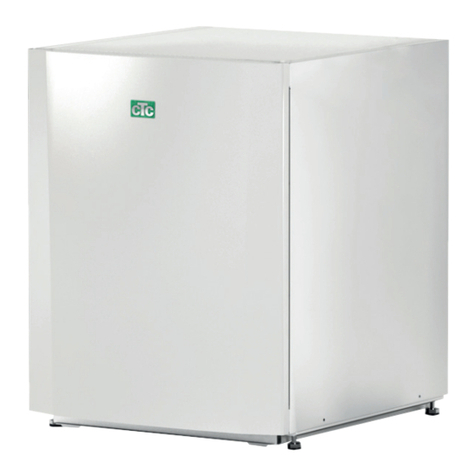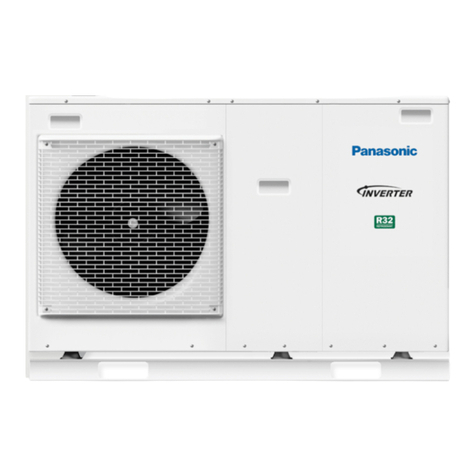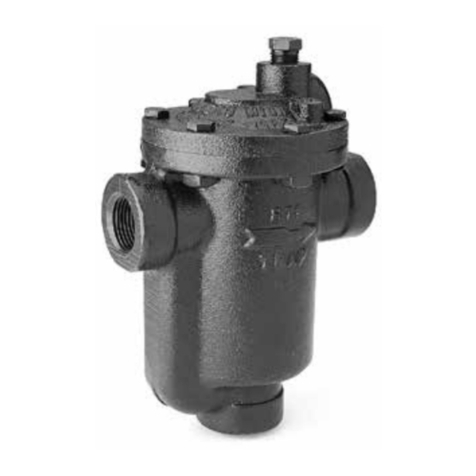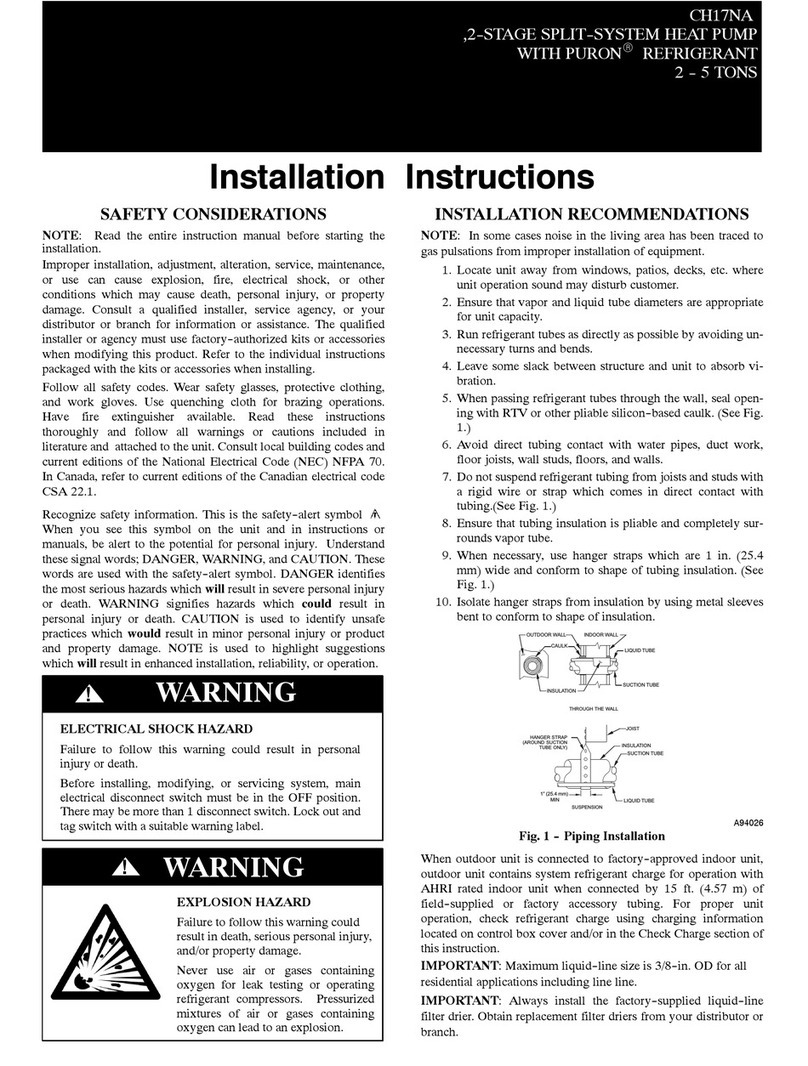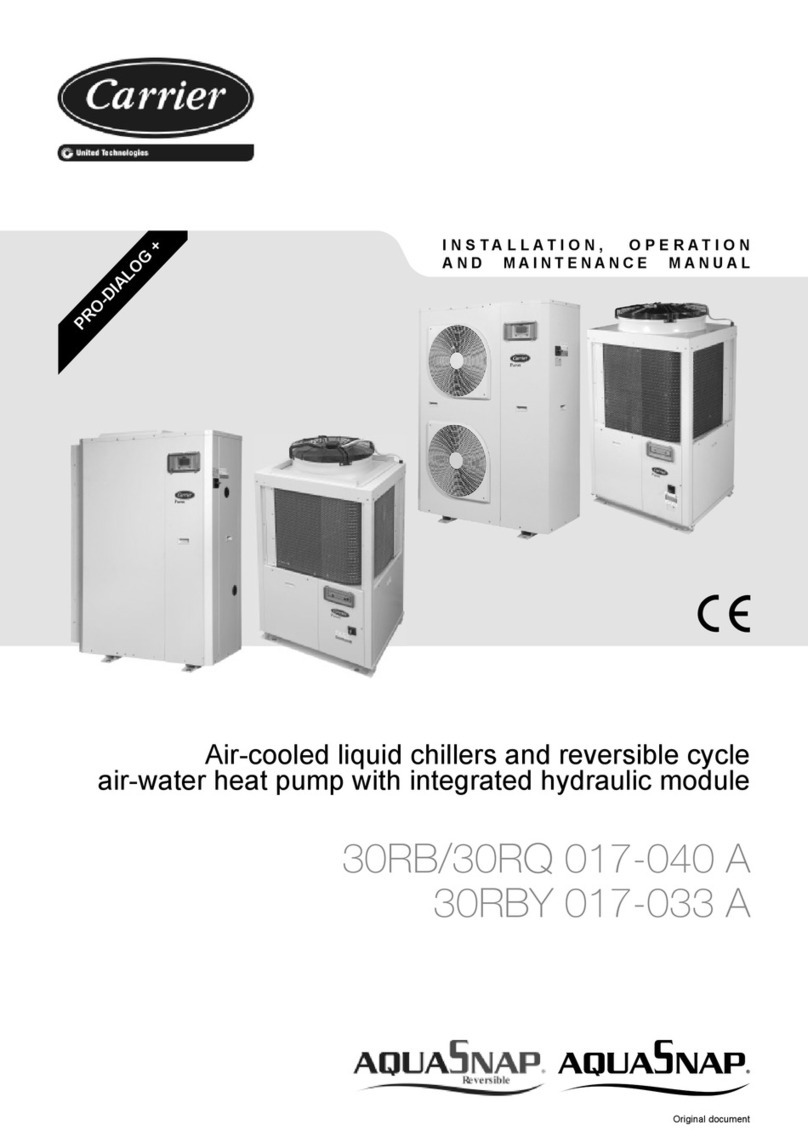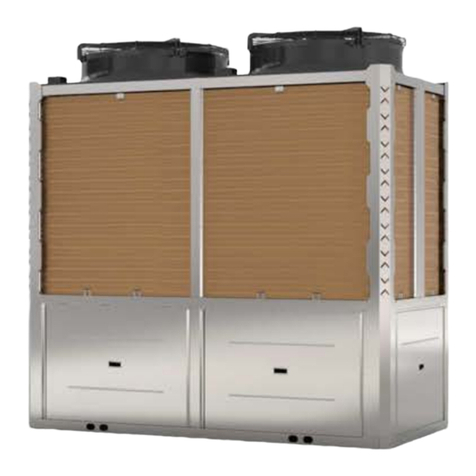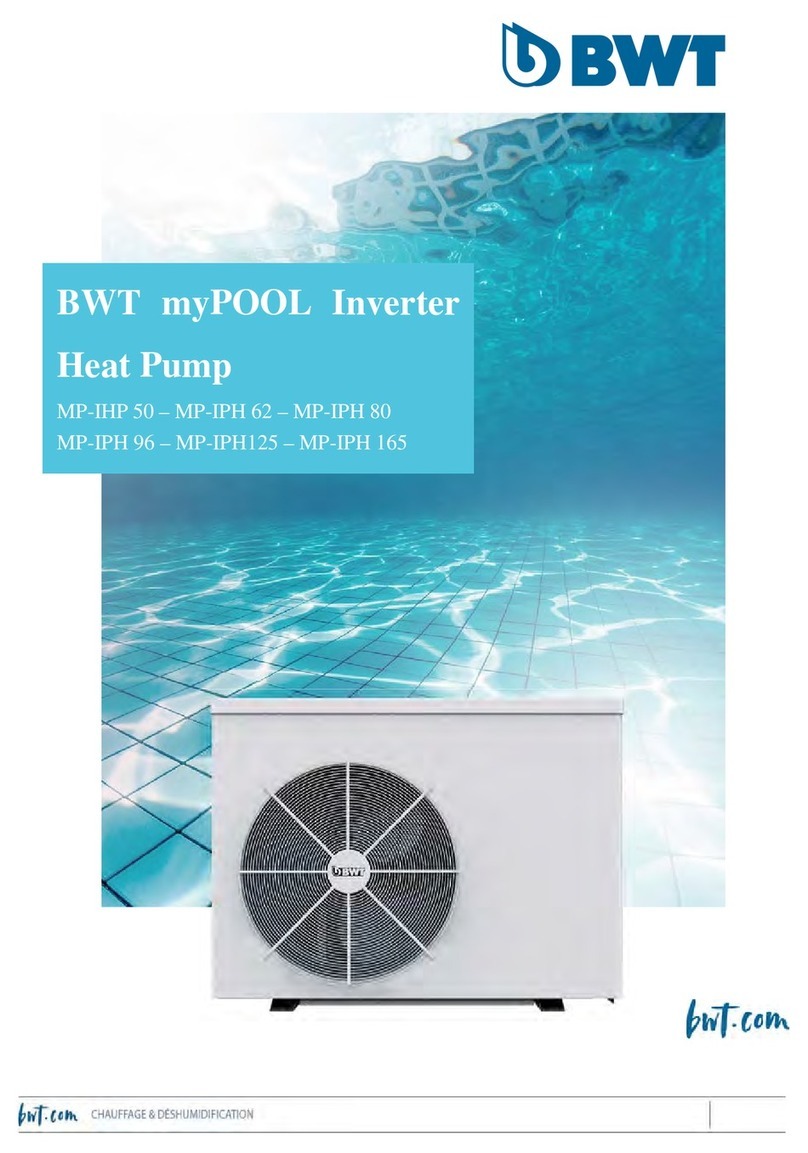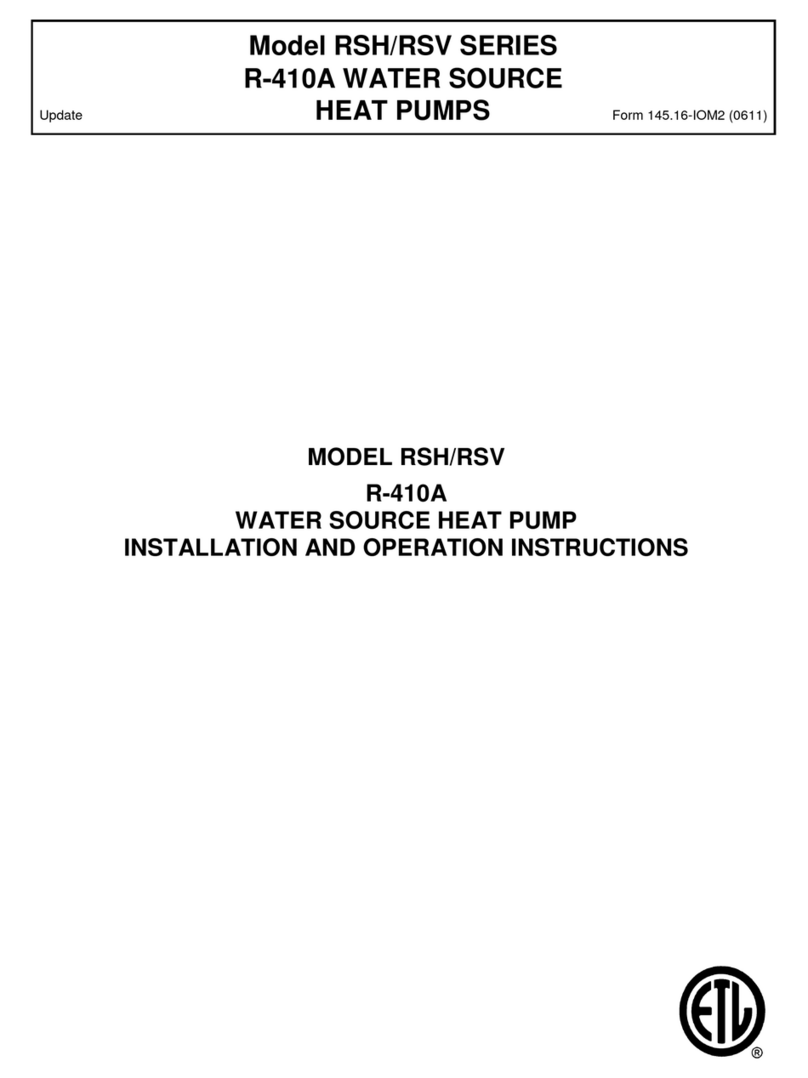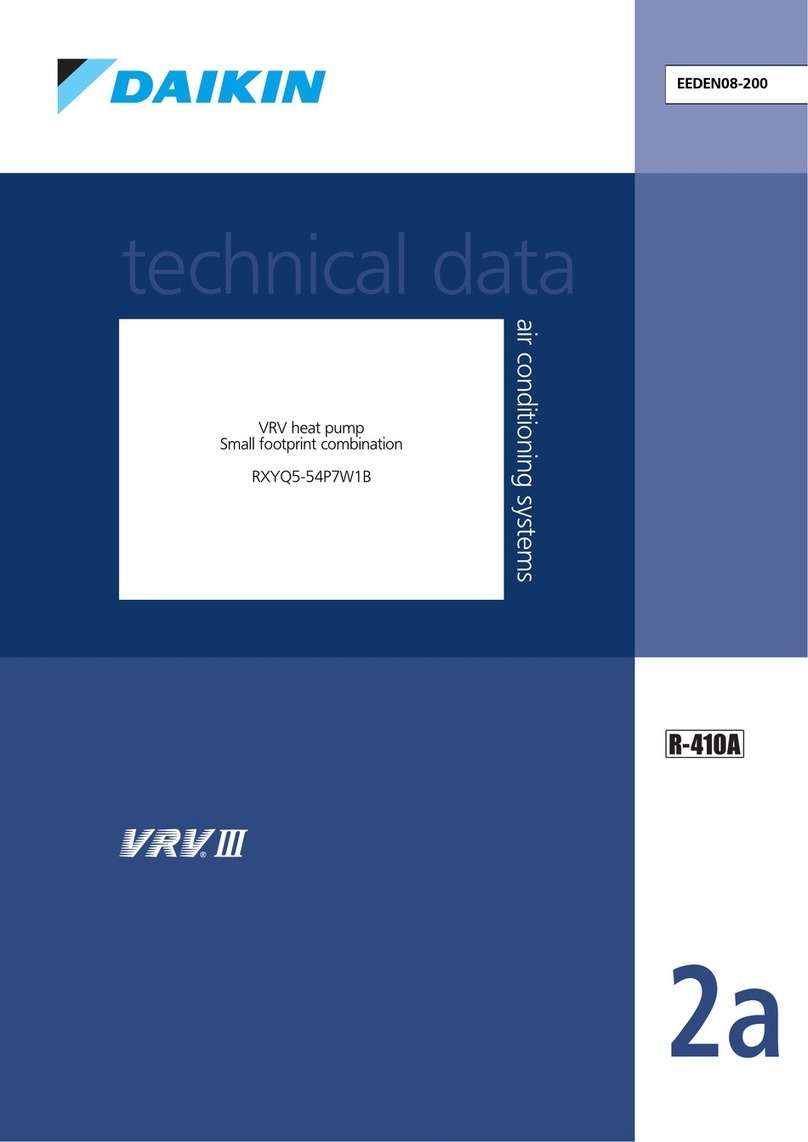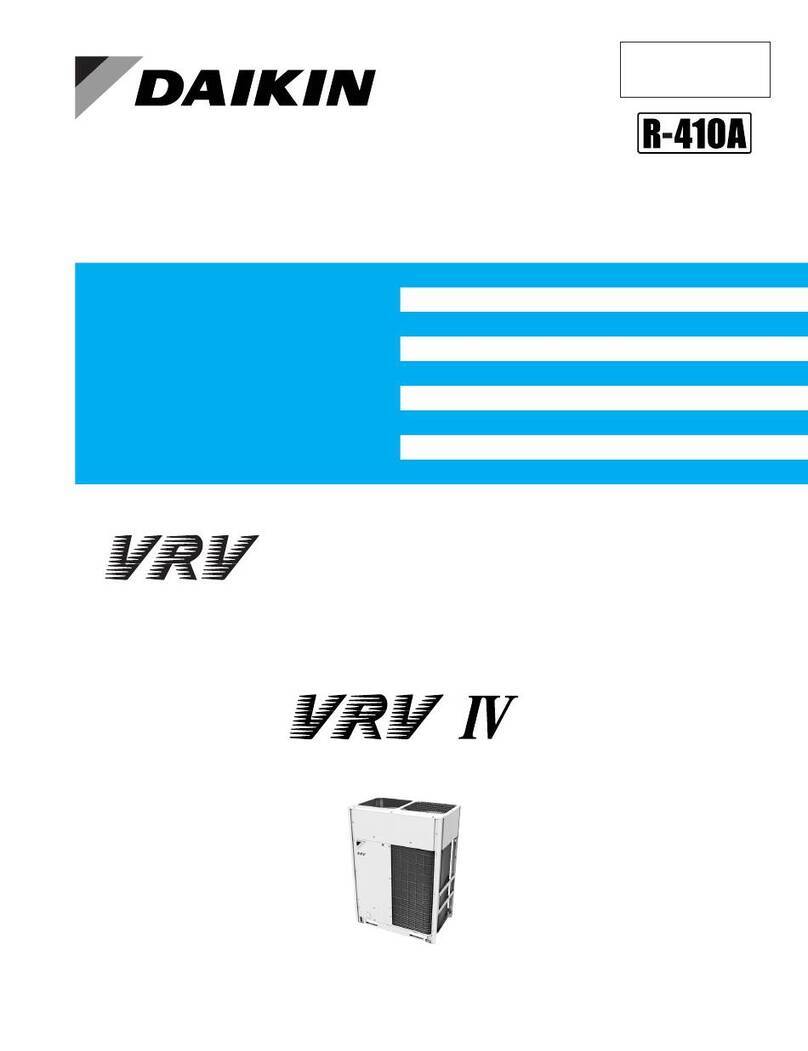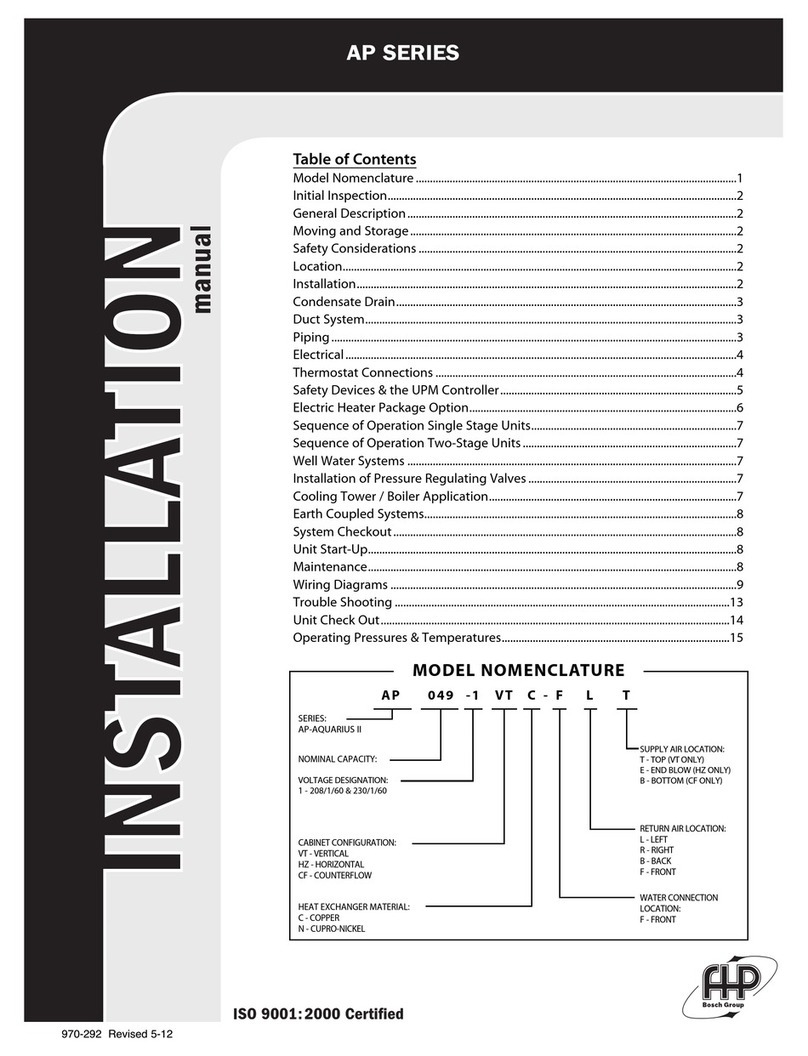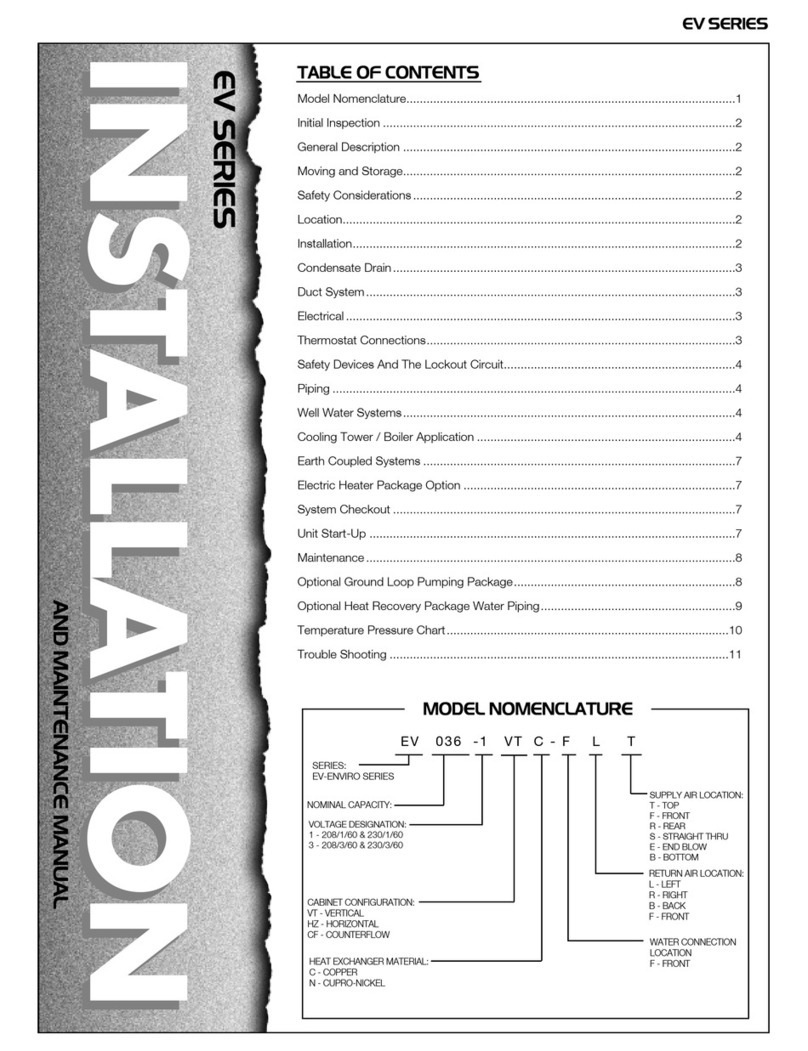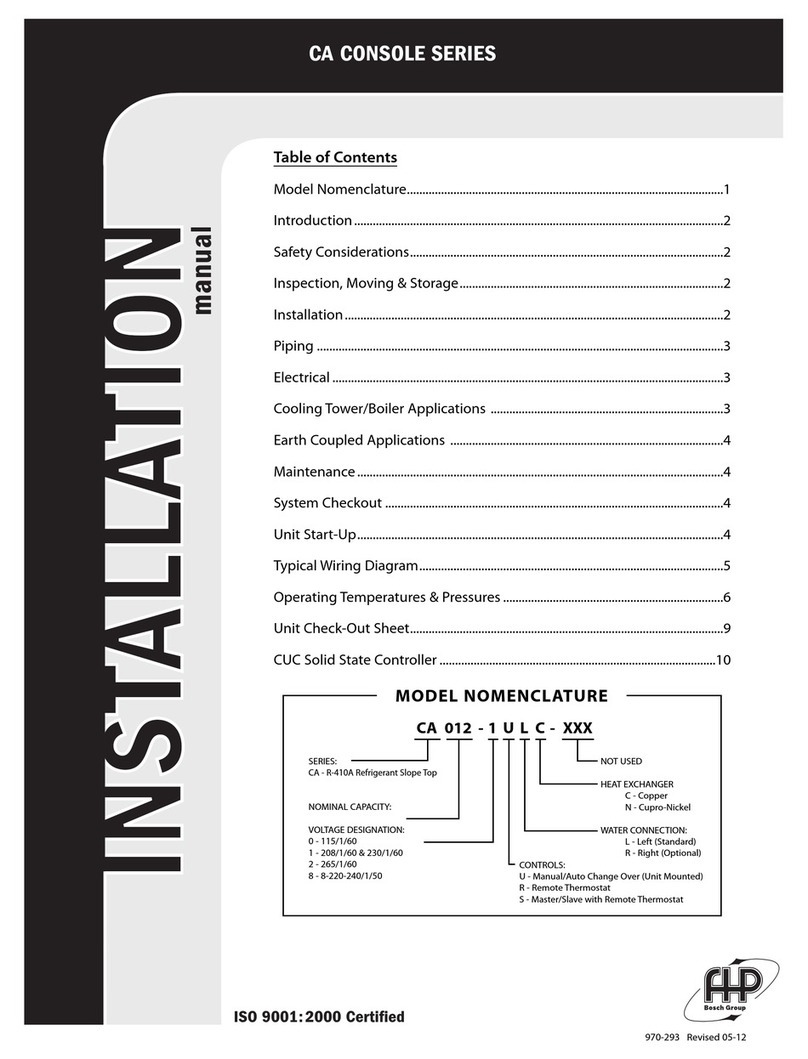
FORWARD:
The complete instruction manual should be read carefully
before beginning installation. Follow the instructions
precisely to insure proper operation of the system.
The instructions are to be left with the homeowner for
future reference if needed. All local, state and national
codes supercede these instructions and must be strictly
adhered to.
UNCRATING AND INSPECTION:
Check for shipping damage, both visible and concealed if
there exists any indication of damage immediately file a
claim with the shipping company. You are the only one to
file a claim regardless of why the damage was incurred or
by whom. Remove the access cover and check all of the
components parts to make sure they are properly secured
before installing the unit. Parts broken loose from their
secured position with resultant damage is considered
damage during shipment.
APPLICATION:
The Heat Recovery unit is a forced pumped unit that
employs a circulating pump to move water through a
double wall/vented heat exchanger and returns the heated
water to the water tank. The water is heated by
superheated refrigerant discharge gas from the
compressor. This waste heat of the cooling mode captured
by the heat recovery increases the capacity and efficiency
of the heat pump unit. If the air temperature is
uncomfortable coming from the air vents in the heating
mode the heat recovery may need to be turned off. In the
heating mode the heat recovery captures heat that would
normally be used for space heating.
NOTE: The performance of the heat recovery package is
based on a variety of variables and may vary from unit to
unit and from application to application based on the
operating conditions of the complete system.
When the HRP is applied to highly efficient heat pumps,
especially the newly released high efficiency 2-step scroll
R410A units, the capacity of the HRP will be reduced due to
lower condensing temperatures and resulting lower
discharge gas temperatures and available super heat levels
for hot water heating. Reduced HRP capacity will also be
evident when the heat pump is applied to low water
temperature systems such as low temperature open wells
and when ground loops are changing over in the spring
months from the heating to the cooling mode.
HRP capacity is also a function of heat pump run times. In
the milder months the heat pump run time will be reduced
based on reduced loads thus the ability to heat hot water is
also reduced. This same result could be noticeable on units
that are over sized for the served loads thus resulting in
short cycling of the heat pump and HRP package.
The HRP is equipped with a LGL (low discharge gas limit)
that disables the HRP pump from operating until discharge
gas temperatures are above the required levels to insure
proper operation. This eliminates the possibility of actually
absorbing heat from the water in the hot water tank. This
safety feature could also reduce HRP run time and further
diminish HRP performance.
FIELD MOUNTING EM/EC SERIES HR KIT:
It is recommended that the heat recovery package be
factory mounted at the time the heat pump is purchased.
This eliminates field intrusion into the refrigeration circuit
of the heat pump and the associated problems that may
arise. If the heat recovery package is to be field installed the
following steps must occur:
1. Disconnect all power supplies to the unit before
servicing. More than one power supply may be present.
2. Remove the lower left side heat pump access panel.
This is where the heat recovery kit will be attached.
(Figure #1)
3. Mark and drill holes in panel where heat recovery
package hot gas in and out lines will enter and exit.
Allow enough space for lines not to touch panels.
4. Mount heat recovery package to panel using sheet
metal screws.
CAUTION: Do not mount heat recovery unit to panel while
on unit. Refrigerant containing components are present
and may be damaged.
5. Remove refrigerant from heat pump utilizing standard
refrigerant recovery techniques.
WARNING: Recovery of this substance is mandatory and
State/ Federally regulated. Failure to recover this
refrigerant properly can/will result in serious penalties
including substantial fines and/or prison sentences.
2
(Figure #1)
(Figure #2)
HEAT RECOVERY








